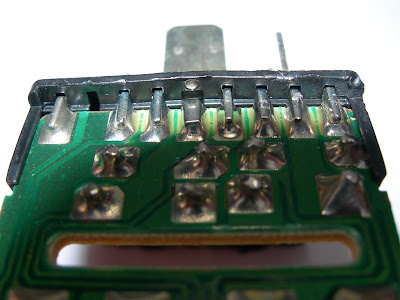My vehicle is a 2001 Saab 9-3 sedan, with a 2.0 L 4-cyclinder turbo-charged gasoline engine. I'm in Hong Kong, so it's right-hand drive.
The car is now more than ten years old (but only 6x,000 km driven), so minor problems are starting to appear. One problem I am sharing and fixing in this post has to do with the headlights.
The symptom I witnessed is, whenever my car is driven across bumpy road, a headlight failure warning often appears. Interestingly, the headlights (both low and high beams) work fine. Thus, I need to find out where this false-alarm originates from, and create a solution.
According to the many Saab enthusiasts I see on the internet, this is a common problem that has to do with what they called "the orange relay" problem. That alias is not entirely correct, though, as I found out.
My investigation began with finding the component in question. It is located inside a fuse box in the engine bay (#4; copyright Saab Automobile AB) :

Inside that box, there is indeed a component in vivid orange color, with terminals at the bottom. Saab/GM part number is 4109070. It appeared to be in good shape, so the problem has to be within it. Time to crack it open:

There is a circuit board inside it. On the flip side...

The two ICs on are both Atmel U479B - Automotive Lamp-outage Monitor IC. A datasheet is available in PDF for those who want to understand how it works. Clearly, this is not a relay.
On close inspection, and according to the pointers from various Saab enthusiasts, the problem is related to not the components soldered on the circuit, but the soldering itself. Here is a close-up of the base-end:

You don't need a magnifying glass to see the crack on the right most terminal. If you have one to look very closely, you will find cracks on almost all the terminals. It seems to me that there is too little solder to properly form a solid connection between those pins from the base and the pads on the circuit board. The cracks are in fact vibration fatigue in solder joints. If the vibration is severe enough, the crack enlarges enough to break an electrical connection. The car computer will interpret that as a headlight failure and generate a warning message.
The obvious fix is to strengthen those terminals with a generous amount of fresh solder and flux.

I am glad to report that I haven't seen the headlight failure warning since the completion of this repair.